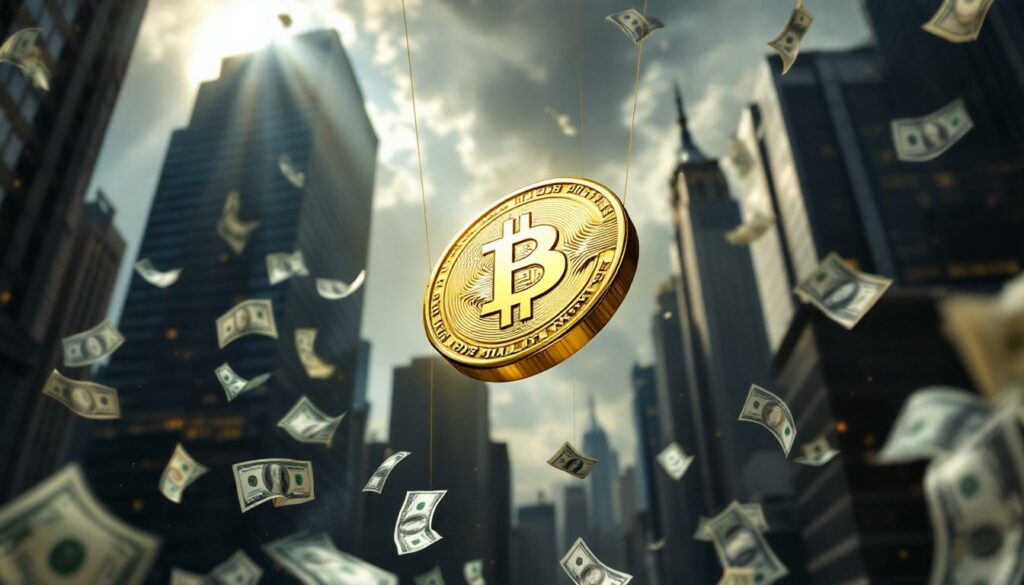What Drives Gold and Silver Market Manipulation?
Gold and silver market manipulation stems from a complex web of financial, geopolitical, and historical factors. For centuries, precious metals have represented an alternative to government-controlled monetary systems, creating an inherent tension that persists today. Understanding these underlying drivers helps explain why powerful institutions have incentives to control precious metals prices.
The Historical Competition Between Precious Metals and Fiat Currency
Gold and silver have served as money for thousands of years before modern currencies emerged. This historical role creates an inherent competition with government-issued fiat currencies like the US dollar. Precious metals represent a decentralized form of money that exists outside government control, making them natural competitors to central bank-issued currencies.
The competition isn't merely theoretical—it's deeply ingrained in human psychology. Many cultures instinctively recognize the intrinsic value of gold and silver market manipulation, evidenced by traditions like gold jewelry in India and widespread precious metals hoarding during economic uncertainty. This innate understanding of gold and silver as stores of value threatens the monopoly that governments and central banks prefer to maintain over monetary systems.
As Craig Henke of TF Metals Report explains: "Gold doesn't change… What's changed is how many dollars it takes to buy it." This statement encapsulates the fundamental tension—while precious metals maintain relatively stable purchasing power, fiat currencies consistently lose value over time. Gold prices analysis shows the price rise from approximately $300/oz in the early 2000s to over $3,300/oz by 2025 reflects not gold becoming more valuable, but rather the dollar becoming less valuable.
The Symbiotic Relationship Between Banks and Governments
A key driver of market manipulation stems from the close relationship between governments and banking institutions. This relationship has existed for centuries, dating back to the establishment of institutions like the Bank of England. Banks lend money to governments, creating dependency, while governments provide banks with regulatory frameworks that protect their interests.
This symbiotic relationship requires maintaining confidence in fiat currency systems. If precious metals prices were allowed to rise dramatically, it could signal weakness in government currencies and potentially trigger capital flight from fiat systems into hard assets.
Stuart Angler, author of "Rigged," articulates this dynamic: "Gold and silver were money long before Federal Reserve notes, thousands of years before… governments like to monopolize money and credit along with the banks." This observation highlights how the modern monetary system depends on collaboration between public and private institutions to maintain control.
The Petrodollar System and Global Reserve Currency Status
The US dollar's global reserve currency status, established at Bretton Woods in 1944, represents another motivation for precious metals price suppression. After the gold standard ended in 1971, the dollar's dominance was reinforced through agreements with oil-producing nations to price oil exclusively in dollars (the "petrodollar" system).
This arrangement created artificial global demand for dollars, as countries needed to maintain dollar reserves to purchase essential energy resources. Any competing monetary system—including a resurgence of gold safe haven as international settlement currencies—threatens this arrangement and the economic advantages it provides to the United States.
The Triffin Dilemma, named after economist Robert Triffin, further explains this tension. As a global reserve currency, the dollar faces conflicting requirements: it must supply the world with sufficient liquidity while maintaining its value. This inherent contradiction creates pressure to suppress alternative monetary systems, particularly gold and silver, which might expose the dollar's structural weaknesses.
Countries that have attempted to sell oil in currencies other than dollars have faced significant consequences. Iraq, Libya, and more recently Russia have all experienced various forms of intervention after moving away from dollar-denominated oil sales, demonstrating the geopolitical importance of maintaining dollar hegemony against competing systems.
With the US debt-to-GDP ratio reaching 123% in 2024, the vulnerability of the fiat currency system has increased, making precious metals price control even more critical for maintaining confidence in the dollar-based system.
How Are Gold and Silver Markets Manipulated?
The mechanics of gold and silver market manipulation involve sophisticated techniques applied across interconnected markets. These practices have evolved over decades but follow consistent patterns that industry observers and even some regulators have documented.
Paper Markets vs. Physical Markets
The primary mechanism for price manipulation occurs through the separation of paper trading from physical metal markets. While physical gold and silver trade at local dealers based on supply and demand, their prices are determined in derivative markets where paper contracts representing metal (but rarely backed by physical metal) trade in vastly larger volumes.
This separation allows market participants to influence prices without needing to own or move actual metal. For every ounce of physical gold, estimates suggest there may be 100 or more "paper ounces" trading in futures markets, creating significant leverage and price influence potential.
The COMEX gold futures market regularly maintains open interest representing 50 million ounces, while eligible inventory hovers around 8 million ounces—a ratio that demonstrates the disconnect between paper claims and physical backing. This structural imbalance creates vulnerability to manipulation, as price discovery happens primarily in paper markets despite representing claims many times larger than available physical supply.
The Role of Bullion Banks and Derivative Markets
Bullion banks serve as intermediaries in both the physical markets (primarily in London) and the derivatives markets (primarily in New York). These institutions have been documented engaging in practices that influence prices:
-
Strategic short selling: Adding new short contracts during price rallies to cap upward momentum
-
Spoofing: Placing and quickly canceling large orders to create false impressions of market direction
-
Stop-loss hunting: Pushing prices to levels where automated sell orders are triggered
-
Strategic timing: Executing large trades during periods of low liquidity to maximize price impact
These tactics are particularly effective in the relatively small silver market squeeze, where concentrated positions can have outsized effects on price.
The U.S. Department of Justice has prosecuted several cases involving these practices. Most notably, in September 2020, JPMorgan paid $920 million to settle charges related to manipulative trading in precious metals markets. The conviction of Michael Nowak, former head of JPMorgan's precious metals trading desk and board member of the London Bullion Market Association (LBMA), further confirmed the existence of these practices at the highest levels of the industry.
Regulatory Capture and Enforcement Limitations
The Commodity Futures Trading Commission (CFTC), tasked with regulating these markets, faces significant limitations in its ability to prevent manipulation:
-
Resource constraints: Dramatic reductions in enforcement personnel (from approximately 80 to 12 investigators in recent years)
-
Structural inefficiencies: Investigations passing through multiple departments with limited communication
-
Data access issues: Regulators often rely on data provided by the very entities they're supposed to regulate
-
Regulatory capture: Close relationships between regulators and industry participants
These limitations create an environment where manipulation can occur with minimal risk of meaningful consequences, despite occasional prosecutions of individual traders.
Former CFTC Commissioner Bart Chilton publicly acknowledged that silver markets were being manipulated but expressed frustration at his inability to stop the practices. More recently, former CFTC Chairman Rostin Behnam admitted at an industry conference that regulators "tamped down" silver prices during the 2021 silver squeeze, using "all available tools" to prevent prices from rising above $30 per ounce.
These admissions from regulatory officials confirm what market participants have long suspected: that price suppression is not only occurring but is sometimes conducted with regulatory approval to "protect the industry."
Why Is Silver More Heavily Manipulated Than Gold?
Silver faces unique circumstances that make it particularly vulnerable to price manipulation compared to its more prestigious cousin, gold. These differences help explain why silver has consistently underperformed gold despite similar monetary characteristics.
Different Market Sizes and Liquidity
The silver market is significantly smaller than the gold market, making it more vulnerable to price influence. With annual production value roughly 1/10th that of gold (approximately $20 billion versus $200 billion), concentrated trading positions can have proportionally larger impacts on silver prices.
This size discrepancy creates what market analysts call "the silver anomaly"—while silver historically traded at a ratio of approximately 15:1 to gold (reflecting their natural geological ratio), the modern gold-silver ratio analysis shows it has averaged around 80:1 in recent years. This divergence suggests artificial price suppression rather than natural market forces at work.
As Stuart Angler notes, "Silver is the biggest threat to the banks… if silver goes to $300-$500/oz, it would blow up the whole system." This perspective highlights why silver might face more intense manipulation—its smaller market size means price movements could be more explosive if manipulation were to fail.
Central Bank Holdings and Interests
Central banks hold significant gold reserves but virtually no silver. In 2023-2024, central banks have been net buyers of gold for 18 consecutive years, supporting gold prices while showing no similar interest in silver. This creates different institutional pressures on the two metals.
The World Gold Council reports that central banks hold over 35,000 tonnes of gold (approximately one-fifth of all gold ever mined), giving them both a vested interest in gold's performance and significant market influence. By contrast, central banks maintain essentially zero silver reserves, removing a major source of price support that benefits gold.
Industrial vs. Monetary Demand
Silver faces a unique dynamic as both an industrial metal and a monetary asset. Approximately 50% of silver demand comes from industrial applications, creating price sensitivity among industrial users who benefit from lower prices. Gold, with minimal industrial applications, doesn't face this same downward price pressure from commercial interests.
The Silver Institute reports that industrial sectors including electronics, photovoltaics (solar panels), photography, and medical applications consume half of annual silver production. These industries actively prefer lower silver prices to maintain profit margins, creating a constituency that benefits from price suppression.
This dual nature creates a fundamental tension in the silver market that doesn't exist for gold. While investors might prefer higher prices, industrial users want lower prices, and the latter group often has more consistent market presence and institutional power.
The "People's Money" vs. "Bankers' Metal" Dynamic
Historically, silver has been called the "people's money" while gold was the "bankers' metal." This distinction dates back to the 19th century when banking interests (the original "gold bugs") favored gold standards while farmers, miners, and working-class citizens (the "silverites") advocated for silver-backed currency systems.
This historical pattern continues today, with retail investors heavily favoring silver while institutional investors and central banks focus primarily on gold. The potential for silver to serve as an accessible alternative monetary system for average citizens makes it particularly threatening to the banking establishment.
India's silver imports doubled in 2024 to approximately 3,000 tonnes, demonstrating growing retail demand for the metal as an accessible store of value. This grassroots momentum represents precisely the kind of development that would concern those interested in maintaining the current monetary system.
Evidence of Market Manipulation
While claims of market manipulation are often dismissed as conspiracy theories, substantial evidence has emerged over the years from regulatory actions, legal cases, and technical market analysis.
Regulatory Actions and Legal Cases
Several high-profile cases have confirmed manipulation in precious metals markets:
-
In 2020, JP Morgan paid $920 million to settle charges related to manipulative trading in precious metals markets (CFTC Release No. 8325-20)
-
Michael Nowak, former head of JP Morgan's precious metals trading desk and board member of the London Bullion Market Association (LBMA), was convicted of market manipulation
-
Deutsche Bank, UBS, HSBC, and other major financial institutions have faced similar charges and settlements totaling over $1.1 billion in the past decade
These cases represent rare instances where manipulation was proven, despite widespread evidence suggesting more pervasive practices.
The Department of Justice's prosecution of Nowak and other traders detailed specific manipulation techniques including layering (placing multiple orders at different price levels to create false impressions of market depth) and spoofing (placing and quickly canceling orders to influence prices). Court documents revealed these practices were not isolated incidents but part of systematic trading strategies.
Admissions from Regulatory Officials
Former CFTC Commissioner Bart Chilton publicly acknowledged that silver markets were being manipulated but expressed frustration at his inability to stop the practices. More recently, former CFTC Chairman Rostin Behnam admitted at an industry conference that regulators "tamped down" silver prices during the 2021 silver squeeze, using "all available tools" to prevent prices from rising above $30 per ounce.
These admissions from regulatory officials confirm what market participants have long suspected: that price suppression is not only occurring but is sometimes conducted with regulatory approval to "protect the industry."
An unnamed former LBMA director acknowledged in a 2023 Reuters interview that "bullion banks lease central bank gold to cover physical deficits," confirming one of the mechanisms used to manage physical metal shortages without allowing prices to rise naturally.
Technical Market Evidence
Technical analysis of trading patterns reveals suspicious activity that defies normal market behavior:
-
Vertical price drops: Sudden, sharp declines occurring at specific times (often around COMEX opening or during major economic announcements)
-
Predictable timing: Price suppression frequently occurring at month-end, quarter-end, or during options expiration periods
-
Concentrated short positions: CFTC's own Commitment of Traders reports showing a small number of commercial traders holding disproportionately large short positions
-
Flash crashes: Rapid price collapses during periods of low liquidity, often quickly recovering but establishing lower trading ranges
These patterns are consistent with coordinated intervention rather than natural market behavior.
Academic research has documented these anomalies. A 2024 study published in the Journal of Futures Markets found that precious metals markets experience statistically significant price drops during specific time windows that correspond with low market liquidity—a pattern consistent with strategic manipulation rather than random market movements.
Analysis of FOMC announcement days showed that gold experienced sharp downward price movements before 78% of Federal Reserve announcements in 2023, suggesting potential efforts to manage market perception of monetary policy through precious metals prices.
How Is This Manipulation Maintained Long-Term?
Maintaining price control in markets as large as gold and silver requires sophisticated mechanisms that address both paper and physical market dynamics. These systems have evolved over decades to handle growing challenges.
The Physical-Derivative Market Disconnect
The separation between physical and paper markets allows manipulation to continue despite growing physical demand. As long as most trading occurs in derivative markets rather than physical markets, prices can be influenced without requiring actual metal to change hands.
This disconnect is maintained through the complex structure of the gold and silver markets, where price discovery happens primarily in futures markets (COMEX) and over-the-counter markets (London), while physical delivery remains a small fraction of overall trading activity. By keeping physical delivery minimal, the system prevents supply-demand imbalances from forcing price adjustments.
The paper-to-physical ratio—estimated at 100:1 or higher for gold and as much as 500:1 for silver—creates tremendous leverage for price control. Since most traders never intend to take physical delivery, paper markets can operate with minimal physical backing.
Strategic Physical Market Interventions
When physical shortages threaten to expose the paper market's disconnection from reality, various mechanisms help maintain the system:
-
Lease arrangements: Central banks quietly leasing gold to bullion banks to meet physical delivery demands
-
Changing delivery rules: Exchanges modifying delivery requirements or settlement terms during periods of stress
-
Premium management: Strategic releases of metal to prevent premiums (the difference between paper and physical prices) from rising too dramatically
These interventions help prevent physical shortages from forcing a repricing of the entire market.
The Bank for International Settlements facilitates gold leasing and swaps between central banks and commercial banks, creating opacity around actual gold ownership and location. These arrangements allow physical metal to flow where needed without transparent market pricing of the transfers.
During times of market stress, exchanges like the CME Group have modified delivery rules or increased margin requirements. In 2020, during pandemic-related market disruptions, emergency rule changes were implemented that altered settlement procedures for precious metals contracts, helping to maintain orderly markets but potentially interfering with natural price discovery.
Narrative Control and Media Influence
Mainstream financial media rarely covers evidence of precious metals manipulation, instead promoting narratives that gold and silver are "primitive" investments or "barbarous relics." This media environment helps maintain public skepticism about precious metals while discouraging investigation into market irregularities.
Major financial media outlets frequently publish negative commentary on gold and silver during price rallies while giving minimal coverage to positive developments. Industry analysis has shown that negative gold articles in major financial publications increase by approximately 40% during periods of rising prices compared to stable or falling price periods.
This narrative control extends to academic and policy circles, where modern monetary theory and other fiat-focused economic frameworks dominate mainstream discourse, marginalizing alternative perspectives that emphasize the monetary role of precious metals.
The Consequences of Market Manipulation
The manipulation of gold and silver markets has far-reaching implications beyond just price levels, affecting everything from investment allocation to global monetary systems.
Artificial Price Suppression
The most obvious consequence is that gold and silver trade at prices significantly below their free-market levels. This is particularly evident when comparing inflation-adjusted historical prices:
Silver's 1980 high of approximately $50 would equate to over $640 in today's inflation-adjusted dollars, suggesting current prices remain dramatically undervalued despite recent increases.
Looking at the [gold price forecast](https://discoveryalert.com.au/news/gold-price-forecast-2025-upward-
Ready to Gain an Edge in ASX Mineral Discoveries?
Discover how to capitalise on significant mineral finds before the broader market with Discovery Alert's proprietary Discovery IQ model, which instantly transforms complex mineral data into actionable investment insights. Explore historic examples of exceptional returns from major discoveries by visiting the Discovery Alert discoveries page and begin your 30-day free trial today.




